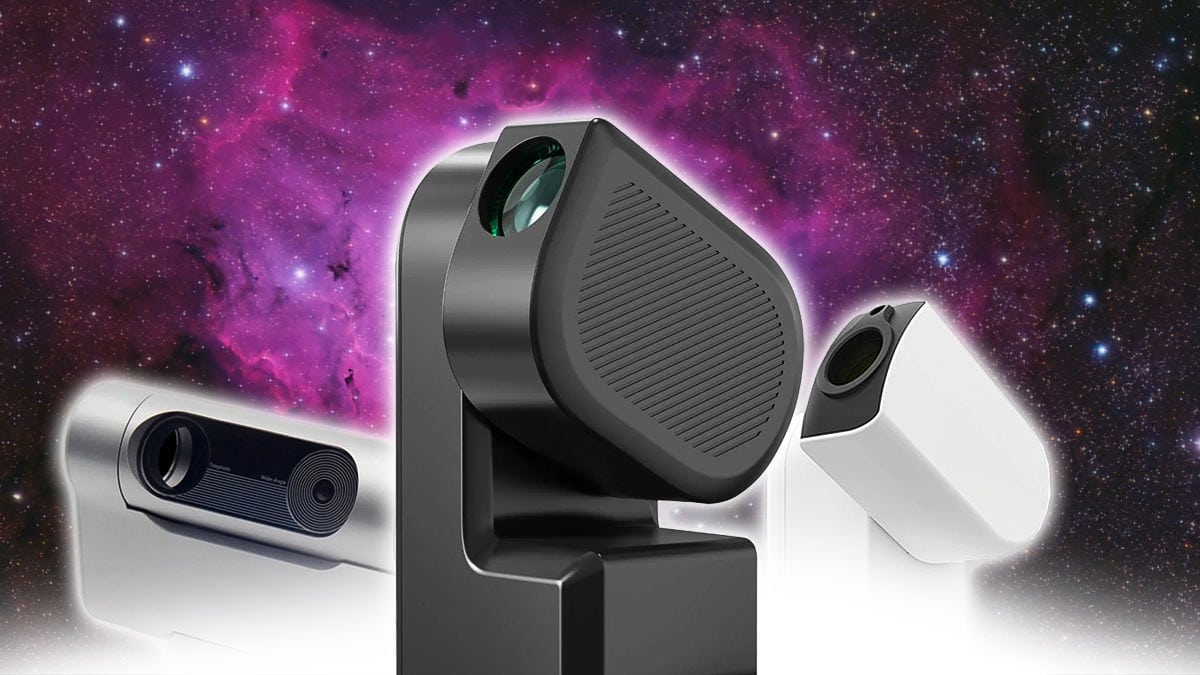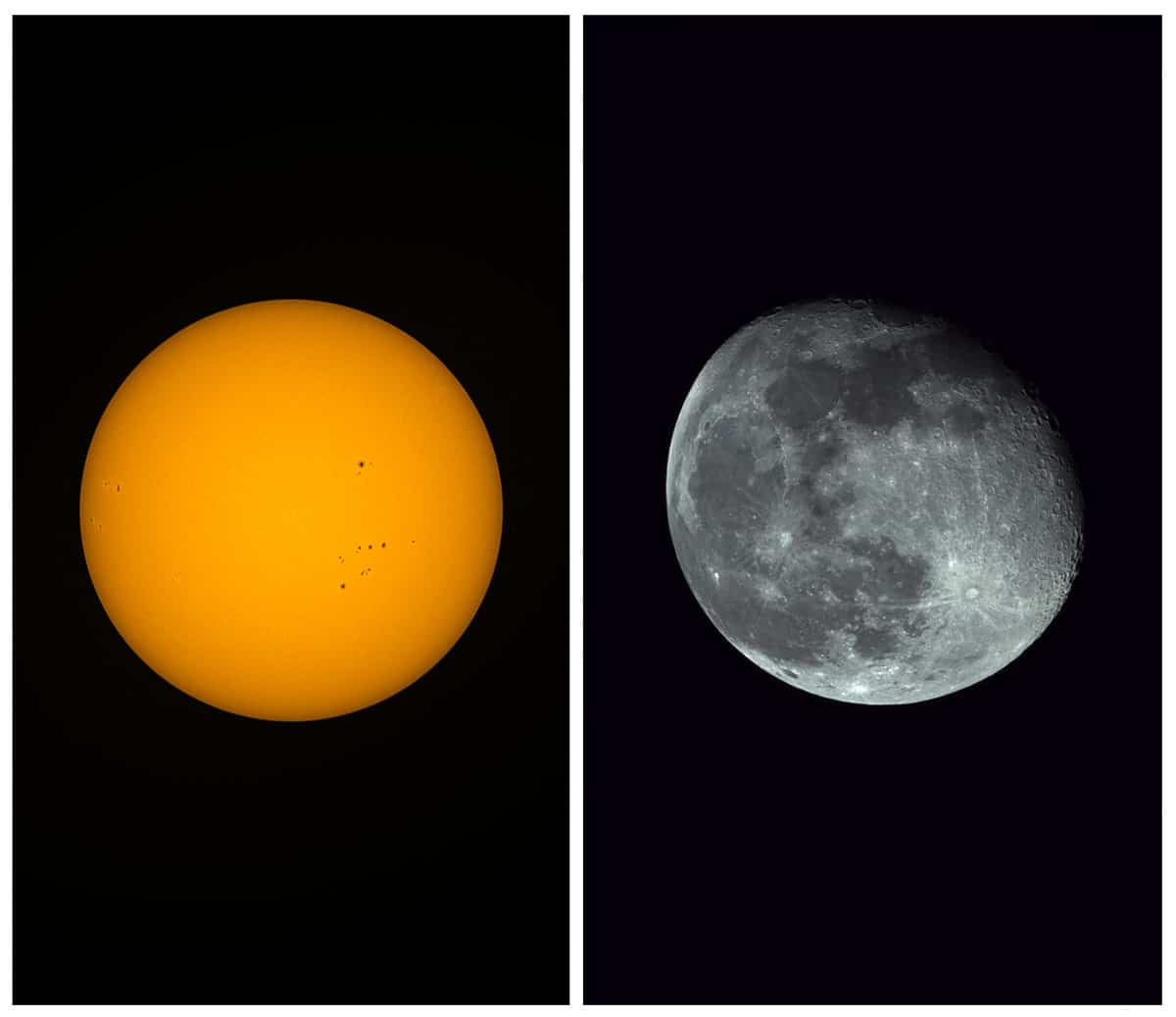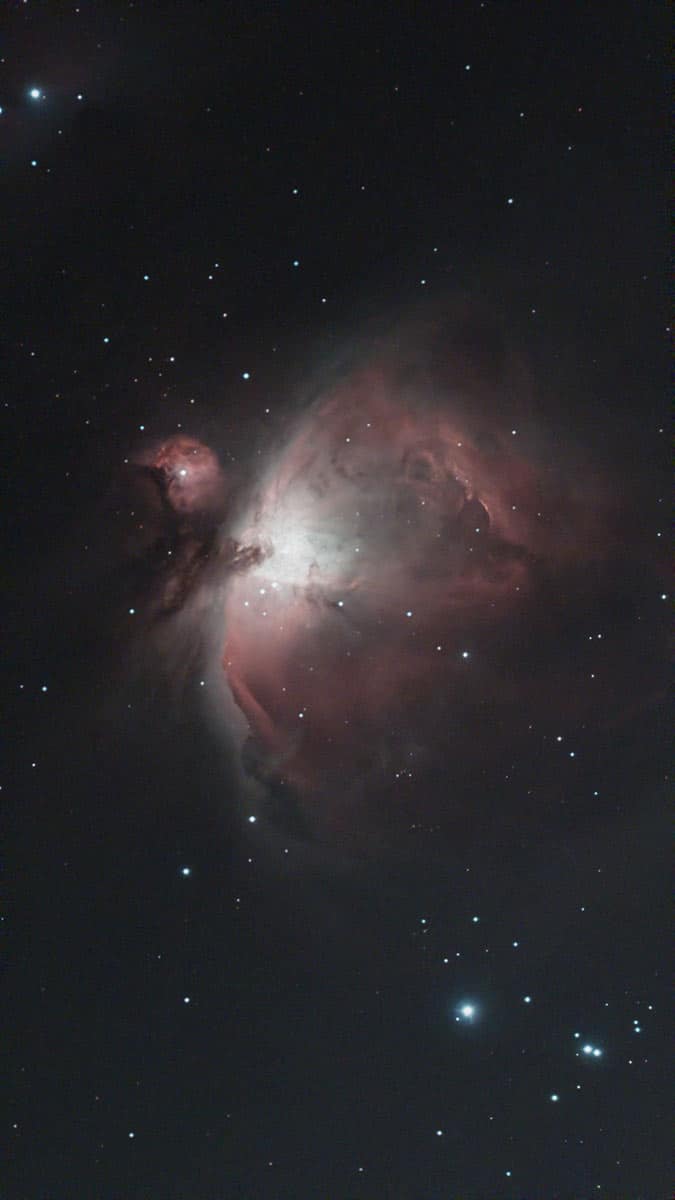The Best Smart Telescopes in 2025
Smart telescopes are revolutionizing amateur astronomy by allowing ordinary people to capture incredible images of space without any prior experience in astrophotography.
These systems combine modern camera sensor technology with computerized tracking platforms to deliver impressive images of deep-sky objects, including galaxies, nebulae, and star clusters.
While many beginners start their astrophotography journey using a smartphone, a smart telescope takes the experience one step further by allowing you to find and track objects in the night sky.
The primary method of delivering impressive images for you to enjoy is through live-stacking, where the smart telescope continuously takes images and ‘stacks’ them to improve the quality over time.
As an experienced astrophotographer, I have been using smart telescopes for several years now. In this article, I’ll cover the best smart telescopes on the market today to help you decide which best suits your needs.
A size comparison between 3 of the most popular smart telescopes for astronomy in 2025.
1. ZWO Seestar S50
The Seestar S50 is a smart, all-in-one telescope designed to simplify astrophotography by automating complex processes.
It allows users to capture stunning space images of the moon, sun, and deep-sky objects with no prior experience.
This compact telescope handles polar alignment, object location, and camera focus, so all you have to do is choose your desired object.
While it isn’t a high-end telescope, the S50 delivers impressive results, particularly for its price range, making it accessible to both beginners and hobbyists.
The Seestar S50 is available at Agena Astro for $549 USD.
Priced at $499 (USD), the Seestar S50 offers one of the most affordable options for capturing deep-sky objects like galaxies, nebulae, and celestial bodies such as the Sun and Moon.
It internally calibrates and stacks images, creating detailed, ready-to-share photos within minutes. The Seestar dedicated mobile app is well-designed and easy to use.
Though smart telescopes may often be dismissed as mere “expensive toys,” the S50’s performance showcases its capabilities.
It proves to be an excellent entry point into astrophotography, especially for those seeking high-quality results with minimal effort.
Key Features:
- Quality Optics: The ZWO Seestar S50 features professional-grade triplet apochromatic optics with high-quality lens coatings, delivering crisp images while minimizing chromatic aberration.
- Image Sensor: The Sony IMX462 sensor, equipped with STARVIS technology, captures clear, sharp 1920×1080 images even in low light and near IR range, making it ideal for astrophotography.
- Live Stacking: The Seestar S50’s live stacking mode enhances image detail and color with each shot, gradually revealing features invisible to the naked eye.
- WiFi Connectivity: The Seestar S50’s built-in Wi-Fi allows for on-the-go use without cell service; simply connect through the generated Wi-Fi via the app after setup to capture stunning space images from any location.
- GoTo and Tracking: With GPS-enabled self-calibration, autofocus, and Auto GoTo tracking, the Seestar S50 automatically aligns, tracks, and maintains a sharp focus on celestial targets.
I took detailed pictures of the sun and moon using the Seestar S50 smart telescope.
Final Verdict:
The Seestar S50 includes advanced features in a compact, easy-to-use package. The dedicated smartphone app is a pleasure to use and makes astrophotography a lot more approachable to the average user.
The drawbacks of the Seestar are its narrow field of view, field rotation (due to its alt-az mount design), and inability to capture planets up close.
However, if you focus on what it does best (live stacking, capturing bright nebula), you will thoroughly enjoy this smart telescope.
At its current price point, the Seestar S50 is an exceptional value. If you are looking for your first smart telescope, it’s hard to go wrong with this one.
My capture of the Orion Nebula using the Seestar S50 in the backyard. (30 minutes of total exposure.)
Compared to the Seestar S30
The Seestar S30 offers several advantages over the Seestar S50, particularly in terms of portability, affordability, and field of view. Weighing just 1.65 kg compared to the S50’s 2.5 kg, the S30 is more compact and travel-friendly.
As its name suggests, the Seestar S30 features a 30mm aperture with a 150mm focal length, providing a wider field of view than the S50’s 50mm aperture and 250mm focal length.
This wider perspective allows the S30 to capture expansive celestial objects more effectively, making it well-suited for wide-field imaging and mosaic photography.
The newly announced EQ mode feature is exciting news for those who want to take even longer exposure images using the Seestar S30.
The Seestar S30 is smaller and more affordable than the larger S50 model.
Priced at approximately $399 USD, it is also more budget-friendly than the S50. If your interest lies in capturing large nebulae in the night sky, the S30 might be a better fit than the S50 due to its wider field of view.
If you are more interested in capturing detailed photos of the Sun and Moon, the S50’s increased focal length is a better fit.
My Seestar S30 Review Video.
2. DwarfLabs Dwarf 3
The Dwarf 3 from DwarfLabs builds on its predecessor (Dwarf 2) with enhancements across optics, sensor capability, battery life, storage, and processing power, creating a more versatile smart telescope for observing objects near and far.
This model offers dual perspectives: a 737mm telescopic view and a 45mm wide-angle view, providing a broader field of vision alongside increased reach.
Paired with an improved sensor and Neural Processing Unit, the Dwarf 3 supports efficient image capture for a wide range of applications, from bird tracking to deep-space imaging.
With a 10,000 mAh battery and 128GB of onboard storage, it’s equipped for extended imaging sessions, whether at home or outdoors.
Key Features:
- Dual Camera System: The Dwarf 3 includes two lenses: a 150mm telephoto offering a 737mm equivalent view at 3840 x 2160 resolution and a 6.7mm wide-angle lens with a 45mm equivalent view at 1920 x 1080 resolution.
- WiFi Connectivity: The Dwarf 3 telescope offers an intuitive experience by allowing easy connection to smartphones via WiFi or NFC, enabling wireless control through the DWARFLAB App.
- Image Sensor: The Dwarf 3 includes a Sony IMX678 camera sensor and built-in astrophotography filters.
- Built-In Filters: The ‘Astro Filter’ is perfect for broadband targets such as galaxies, and the ‘Dual-Band Filter’ isolates key wavelengths for better imaging of emission nebulae.
- GoTo and Tracking: The Dwarf 3 tracks stars and uses a field-rotation-correction algorithm, with the option for EQ mode on a user-supplied tripod for longer exposures.
- Internal Processing: It simplifies image stacking and processing with AI-powered noise reduction and supports various export formats, including FITS, JPEG, PNG, and TIFF, for more hands-on post-processing.
I thoroughly enjoyed using the Dwarf 3 smart telescope to capture several deep-sky objects in my backyard.
Final Verdict:
With a dual-camera system and filters to enhance infrared and emission nebulae, the Dwarf 3 has a lot to offer. The DWARFLAB app is straightforward and allows you to fully explore the device’s features.
I also appreciate the handy EQ mode that allows you to take longer exposures than you would expect on an Alt-Az tracking mount. At $499 USD, it is a fierce competitor to the popular ZWO Seestar S50.
I was impressed with the image quality in my capture of the Andromeda Galaxy with the Dwarf 3.
The Dwarf 3 is available at Agena Astro for $549 USD.
3. Unisteller eVscope 2
The Unistellar eVscope 2 is a smart telescope designed to make stargazing more accessible and fun than a traditional visual telescope. It combines advanced technology with a sleek design that allows for effortless control from your smartphone.
It features an updatable onboard computer, a Nikon micro-OLED eyepiece, and autonomous sky alignment. It has a built-in 5,500 celestial object database, so you’ll never run out of things to look at with it.
While the eVscope 2 can do some incredible things, the price is much higher than the previous two smart telescopes mentioned. As you’ll see in the video review below, the cost is just too high to justify this model over its competitors.
Key Features:
- Aperture: The eVscope 2’s 114 mm aperture is considerably larger than that of most other smart telescopes (other than the Celestron Origin), enabling it to capture faint and distant objects with better detail.
- Focal Length and F-Ratio: With a 450mm focal length and an f/4 focal ratio, this telescope strikes an excellent balance between magnification and brightness, making it suitable for deep-sky observation.
- Enhanced Vision Technology: Unistellar’s Enhanced Vision technology amplifies the brightness of observed objects, allowing users to view galaxies, nebulae, and star clusters in vivid detail.
- Image Sensor: The eVscope 2 features a Sony IMX347 7.7 MP sensor, which provides high-resolution images with minimal noise and enhances the overall viewing experience.
- Long Battery Life: The eVscope 2 offers up to 10 hours of continuous observation on a single charge, allowing users to enjoy uninterrupted stargazing sessions.
- Real-Time Observation: This telescope includes a feature for live viewing, allowing users to share their observations in real-time with others and participate in citizen science initiatives.
The Unistellar evScope 2 offers a slick user experience, but the price is too high compared to what the other (more affordable) smart telescopes can produce.
Final Verdict:
At a price point of $4,199 USD, the eVscope 2 is much more expensive than some of the other very capable smart telescopes available in 2025.
Unless you have your heart set on the Unistellar user experience, I think your money is better spent on the Dwarf 3 or Seestar S50.
Hendrik Vandenbruaene took the following images using the Unistellar evScope II. See the full-size version on Flickr.
4. Vaonis Vespera II
The Vaonis Vespera 2 is another premium smart telescope that combines a sleek design with powerful technology. It was designed for users who want a compact, user-friendly experience.
Like the other smart telescopes mentioned in this article, the Vespera offers automated tracking and image stacking to produce clear and detailed images of celestial objects.
Key Features:
- Aperture: The Vespera has a 50mm aperture designed to capture a broad range of celestial objects, from the moon to distant nebulae and star clusters.
- Focal Length and Ratio: Its 200mm focal length and f/4 focal ratio make it adept at capturing wide-angle shots with excellent depth and contrast.
- Sensor: Using the same Sony IMX462 sensor found in the Seestar S50, the Vespera captures 1080p images and is capable of stacking images to improve detail and reduce noise.
- Battery Life: With up to 4 hours of battery life, the Vespera supports longer observation sessions with a straightforward charging process.
- Automated Tracking and Stacking: The Vespera’s app-controlled automation provides an easy-to-use interface that allows for auto-tracking and stacking, which helps bring out detail in deep-sky objects even in light-polluted areas.
The Vaonis is beautifully designed and packed with handy features like automated observation plans and mosaic mode.
Final Verdict
Priced around $2,499, the Vaonis Vespera is a solid choice for users who want a blend of style, ease, and quality in their astrophotography experience, providing excellent results without needing complex setup or adjustments.
The Vaonis Vespera II offers premium build quality, excellent optics, and advanced features like automated observation plans and mosaic mode, designed for a seamless astrophotography experience.
While it justifies its high price with superior performance, drawbacks include limited internal memory and shorter battery life compared to the more affordable Seestar S50.
The choice between them depends on whether users prioritize top-tier capabilities or budget-friendly functionality.
5. Celestron Origin
The Celestron Origin Smart Telescope is an all-in-one home observatory designed to simplify stargazing and astrophotography for users of all experience levels.
It combines advanced optical technology with user-friendly features to deliver stunning images of celestial objects directly to your smartphone or tablet. Cody (AstroBlender) shared the following Celestron Origin review video.
Key Features:
Revolutionary RASA Optical Technology: At the heart of the Origin is a 6-inch Rowe-Ackermann Schmidt Astrograph (RASA) optical system.
This design offers a fast f/2.2 focal ratio, providing unparalleled image brightness and clarity with shorter exposure times.
- High-Quality Imaging Sensor: Equipped with a Sony IMX178 color CMOS sensor featuring STARVIS back-illuminated technology, the telescope captures high-resolution images with low noise, enhancing the clarity of celestial observations.
- Automated Setup with StarSense Technology: The Origin utilizes Celestron’s StarSense technology to automatically align itself by scanning the night sky and matching star patterns, allowing users to begin observing in less than two minutes.
- AI-Powered Real-Time Image Processing: Built-in AI algorithms autonomously stack and process images in real time, delivering detailed and colorful views of galaxies, nebulae, and other deep-sky objects without user intervention.
- User-Friendly Mobile App: The companion app, developed in partnership with Simulation Curriculum, offers an intuitive planetarium interface for easy navigation and control. It also provides educational audio presentations on selected celestial objects.
- Shared Viewing Experience: Multiple users can connect to the telescope simultaneously, and the live feed can be cast to a smart TV or projector, making it ideal for group observations.
The Celestron Origin Smart Telescope is available on Amazon.
Final Verdict
The Celestron Origin Smart Telescope represents a significant advancement in making astronomy accessible and enjoyable, combining sophisticated technology with simplicity to provide a rich observational experience.
While the price tag seems pretty steep compared to the fantastic Dwarf 3 and Seestar S50 models, it makes up for it with some of the best images and internal image processing of the mix.
James Neely took the following images using the Celestron Origin in only 30 minutes!
Choosing the Best Smart Telescope for You
Choosing the best smart telescope depends on your level of experience, interest, and budget. For beginners or casual observers, the Seestar S50 provides an affordable and easy-to-use option for both daytime and nighttime viewing.
The Dwarf 3 is an excellent choice for those who value portability and versatility, allowing users to experiment with timelapse and day/night observation on a budget.
The Celestron Origin is the clear winner in terms of optics, featuring a 6-inch RASA telescope with an impressive focal ratio of F/2.2.
This can produce sensational images of distant galaxies and nebulae through long-exposure imaging and live stacking.
Each of these smart telescopes offers unique capabilities, making stargazing and astrophotography more accessible and enjoyable for everyone.
My final image of the Horsehead Nebula captured on the Dwarf 3. (Straight out of the Dwarf 3 vs. processed by me).
A Smart Telescope for Viewing Planets?
All of the smart telescopes in this review have one thing in common: they take images at a short focal length, resulting in a rather wide field of view. While this is advantageous for viewing and photographing nebulae and galaxies, solar system planets appear quite small.
If you have your heart set on viewing planets up close (and taking pictures of them), consider a more traditional telescope like the Celestron NexStar 8SE. While this is not a smart telescope, it does have a computerized ‘GoTo’ mount that can help you find and track planets in the night sky.
This model features a Schmidt-Cassegrain telescope (SCT) with a long focal length (2000mm), better suited to view planets like Saturn and Jupiter up close. Perhaps a larger version of one of the smart telescopes mentioned will come along in 2025, better suited for planetary imaging.















